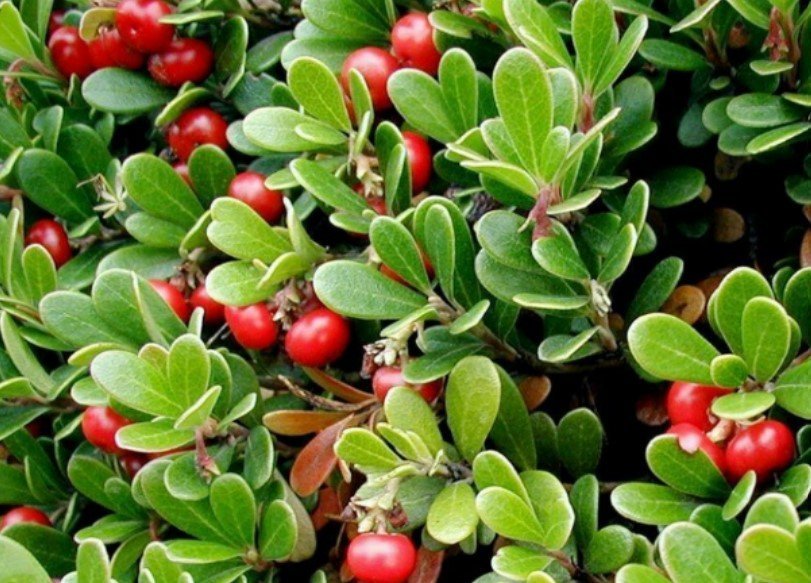 Image 1 of 2
Image 1 of 2

 Image 2 of 2
Image 2 of 2



Arctostaphylos uva-ursi (Kinnikinnick)
This has been propagated from our local, PNW native genetics, so it is more "wild" and less dense in appearance than the cultivated forms that are extra bushy.
This popular evergreen groundcover will spread quickly by runners, and will be up to 6-8 in. high; like all kinnikinnicks, it ultimately forms a spreading mat, though the native species is less dense and offers more gaps in which you can grow native perennials. You'll want several for coverage, interlocking with each other to fully cover an area. Very useful for controlling erosion on slopes, it grows in rocky, sandy soil in full sun or partial shade and becomes drought tolerant once established. Its small, pink, urn-shaped blooms attract hummingbirds in the spring and its lustrous, thick green leaves act as a host plant for several butterfly species.
Bright red fruits are eaten by birds in winter as well as by bears; consequently one of its common names is Bearberry (and also Kinnikinnick, from the Algonquin). Native to much of North America and other parts of the Northern Hemisphere and was used for various medicinal purposes by Native Americans. Deer resistant and thrives in drought!
This has been propagated from our local, PNW native genetics, so it is more "wild" and less dense in appearance than the cultivated forms that are extra bushy.
This popular evergreen groundcover will spread quickly by runners, and will be up to 6-8 in. high; like all kinnikinnicks, it ultimately forms a spreading mat, though the native species is less dense and offers more gaps in which you can grow native perennials. You'll want several for coverage, interlocking with each other to fully cover an area. Very useful for controlling erosion on slopes, it grows in rocky, sandy soil in full sun or partial shade and becomes drought tolerant once established. Its small, pink, urn-shaped blooms attract hummingbirds in the spring and its lustrous, thick green leaves act as a host plant for several butterfly species.
Bright red fruits are eaten by birds in winter as well as by bears; consequently one of its common names is Bearberry (and also Kinnikinnick, from the Algonquin). Native to much of North America and other parts of the Northern Hemisphere and was used for various medicinal purposes by Native Americans. Deer resistant and thrives in drought!
This has been propagated from our local, PNW native genetics, so it is more "wild" and less dense in appearance than the cultivated forms that are extra bushy.
This popular evergreen groundcover will spread quickly by runners, and will be up to 6-8 in. high; like all kinnikinnicks, it ultimately forms a spreading mat, though the native species is less dense and offers more gaps in which you can grow native perennials. You'll want several for coverage, interlocking with each other to fully cover an area. Very useful for controlling erosion on slopes, it grows in rocky, sandy soil in full sun or partial shade and becomes drought tolerant once established. Its small, pink, urn-shaped blooms attract hummingbirds in the spring and its lustrous, thick green leaves act as a host plant for several butterfly species.
Bright red fruits are eaten by birds in winter as well as by bears; consequently one of its common names is Bearberry (and also Kinnikinnick, from the Algonquin). Native to much of North America and other parts of the Northern Hemisphere and was used for various medicinal purposes by Native Americans. Deer resistant and thrives in drought!
